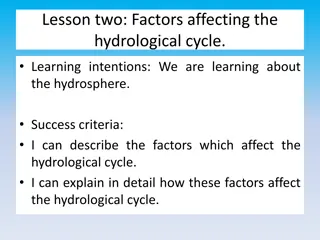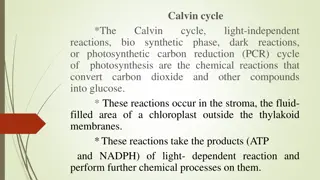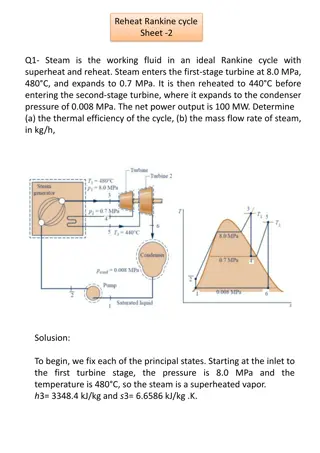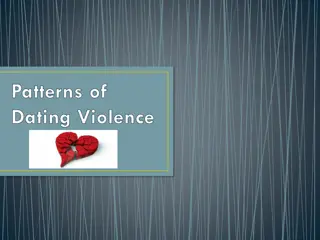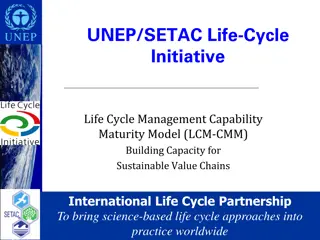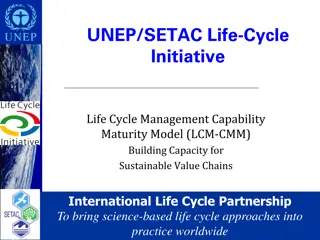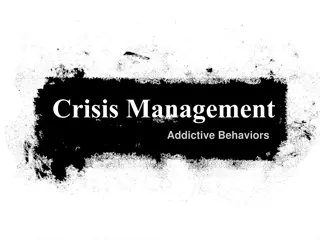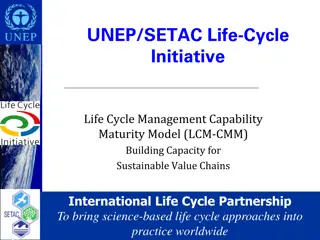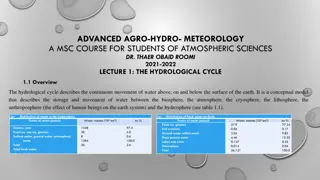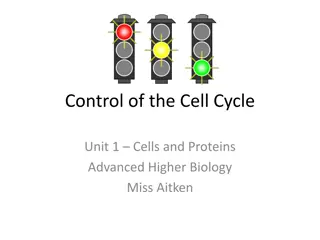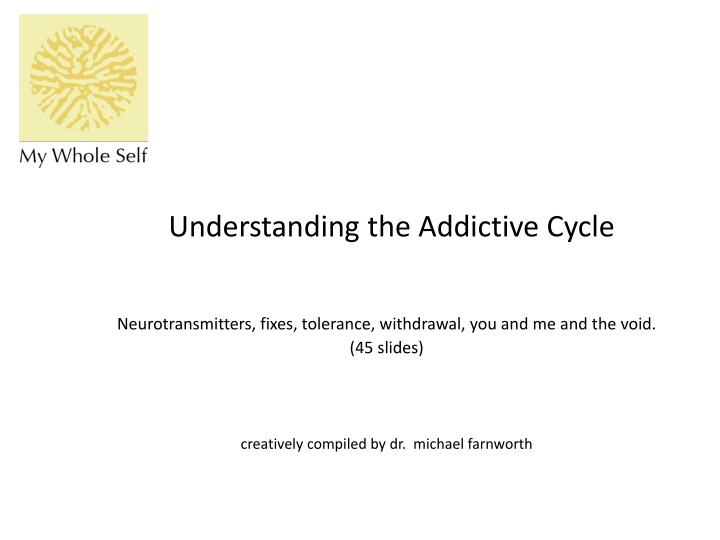
Addictive Cycle and Twelve-Step Program
Explore the addictive cycle, neurotransmitters, fixes, tolerance, and withdrawal with insights into the twelve-step program for overcoming addiction. Delve into the model of addictive coping and the societal impact on addictive behaviors.
Download Presentation

Please find below an Image/Link to download the presentation.
The content on the website is provided AS IS for your information and personal use only. It may not be sold, licensed, or shared on other websites without obtaining consent from the author. If you encounter any issues during the download, it is possible that the publisher has removed the file from their server.
You are allowed to download the files provided on this website for personal or commercial use, subject to the condition that they are used lawfully. All files are the property of their respective owners.
The content on the website is provided AS IS for your information and personal use only. It may not be sold, licensed, or shared on other websites without obtaining consent from the author.
E N D
Presentation Transcript
Understanding the Addictive Cycle Neurotransmitters, fixes, tolerance, withdrawal, you and me and the void. (45 slides) creatively compiled by dr. michael farnworth
The addictive process The addictive process is an unhealthy and abnormal disease process, whose assumptions, beliefs, behaviors, and lack of spirituality lead to a process of nonliving that is basically death-oriented. This basic disease is tacitly and openly supported by the society in which we live. Anne Wilson Schaef
Addiction is mankinds unifying experience. Stanton Peele
The model of addictive coping: Problem Symptom .. Treatment marital conflict . anxiety drinking failure .. fear/sadness . eating lonely .emptiness .. shopping
Alcohol Addiction is one of the most resistant discouraging behaviors to deal with. The addictive alcohol system is one of the most resilient to change and intervention. The typical psychological therapeutic approaches are almost ineffectual. The twelve step program originated and developed by two drunks in the 1930s has been over time, most successful.
The twelve step program Is a program that is based upon an understanding of surrender and turning one s life over to a higher power This is important for two reasons: #1. This approach is basically ostracized by the scientific community because God has no place in science (positivism) and #2. This program has been duplicated all over the world with many different addictions because it works and is based upon some truth that the scientific community shies away from.
The twelve steps 1. We admitted we were powerless over alcohol that our lives had become unmanageable. 2. Came to believe that a Power greater than ourselves could restore us to sanity. 3. Made a decision to turn our will and our lives over to the care of God as we understood Him. 4. Made a searching and fearless moral inventory of ourselves. 5. Admitted to God, to ourselves, and to another human being the exact nature of our wrongs. 6. We re entirely ready to have God remove all these defects of character.
The twelve steps continued 7. Humbly asked Him to remove our shortcomings. 8. Made a list of all persons we had harmed, and became willing to make amends to them all. 9. Made direct amends to such people wherever possible, except when to do so would injure them or others. 10. Continued to take personal inventory and when we were wrong promptly admitted it. 11. Sought through prayer and meditation to improve our conscious contact with God as we understood Him, praying only for knowledge of His will for us and the power to carry that out. 12. Having had a spiritual awakening as the result of these steps, we tried to carry this message to alcoholics, and to practice these principles in all our affairs.
The following is a poem about addiction and its insidious effects and eventual recovery and health.
Autobiography in Five Short Chapters by Portia Nelson I. I walk down the street. There's a deep hole in the sidewalk. I fall in. I am lost.....I am helpless; it isn't my fault. It takes forever to find a way out. II. I walk down the same street. There is a deep hole in the sidewalk. I pretend I don't see it. I fall in again. I can't believe I am in the same place; but it isn't my fault. It still takes a long time to get out.
Poem continued III. I walk down the same street. There is a deep hole in the sidewalk. I see it is there. I still fall in....it's a habit. My eyes are open. I know where I am. It is my fault. I get out immediately. IV. I walk down the same street. There is a deep hole in the sidewalk. I walk around it. V. I walk down a different street.
Characteristics of the addict: 1. Dishonest by not naming and lying about the addictive agents. 2. Grandiose by believing themselves to be the exception and not being effected. 3. Control freak by obsessing about behavior and surrounding themselves with enablers. 4. Perfectionist by rational, logical, self centered control of self.
The nature of addiction The nature of addiction is similar regardless of what addictive agent is involved. The common denominator of all addictions is that of denial. Denial is the hall mark of an addict and nothing changes until the denial is breached. Traditionally it happens when the addict bottoms out which is a way of saying they have come to the end of the proverbial rope.
We do not differ in kind but in degree. When most of us think of addictions we conjure up the alcoholic, the street addict, the poor pathetic characters that we see depicted on the mass media. The truth is much closer to home but we are kept hidden from the truth because of denial and dishonesty.
An Addictive Culture Culture hides much more than it reveals and what it hides, it hides most effectively from its own participants. Edward T. Hall If our culture is addictive in nature (behavior and orientation) then we would probably suffer from the well known phenomenon of denial as every addict is famous for their level of denial.
How about it? Any denial at there? Are you an addict? Do you engage in an addictive life style? Do you have the characteristics of an addict? Do you even know what they are? How many substances, processes, relationships are you addicted too? Is any of this remotely interesting to you?
Where is your supply? What is your supply? How do you protect it? How do you keep it safe? Do you have more than one source/supplier? How often do you need to get a fix? How tricky are you in your maneuverings to get a fix? Are these questions just a little wacky?
The reason for addictions Addictions have the ability to mood alter. They take us from one energy state to another typically from anxiety, stress (negative energies) to more positive ones like calm, excitement, security and satisfaction. Any thing that mood alters can become addictive over time depending upon the history and when and how it is used. Brain/body chemistry is the key.
The Brain Chemicals and neurotransmitters of Addiction: Dopamine: a novelty high Serotonine: a tranquil harm avoidant calm Norepinephrine: a reward high CRH-Adrenaline: a danger high CRH-cortisol: a settling/comforting calm
Some examples Dopamine: the novelty high of sexual acting out, trying something exciting and new like motor cycles, delinquent behaviors, seducing someone, fantasy. Serotonine: the tranquil calm of being good, getting a job done, service, peace making, loving someone. Norepinephrine: the rewarding high of succeeding, winning, being competitive, setting goals, working. CHR-Adrenaline: the danger and risk high of doing something scary, rock climbing, sky diving, racing. CHR-cortisol: the calming comfort of sleeping, eating, music, T.V., agreeing, eating, relaxing, cleaning.
The problem Eventually the mood altering person, event or behavior will build tolerance and more will be required to produce the chemically desired brain/body response. Most of us cultural addicts have two to four clustering addictions that we can call upon in times of stress and anxiety. An addiction cluster might be: food, sexual, religion and music.
Tolerance The process of tolerance, which includes habituation and saturation, requires: Increasing frequency. Increasing duration. Increasing amounts. Increasing variety. Increasing intensity. All of which can create problems in our lives when they get out of control.
The use of addictions may seem contradictory Addictive agents are used for paradoxical opposite reasons and it is important to recognize their influence. To feel alive or to numb out and not feel. To feel in control or to feel out of control.
The paradoxical nature of addictiondont be fooled by appearances. Since a state of health is based on balance and harmony then 180 degrees from sickness, is still sick, still out of balance. Addiction can appear with opposite looking masks as in the food addiction of anorexia nervosa and bulimia nervosa. One is obsessed with not having food and the other with having. Both are dis-eased metaphors, out of balance.
Mankind's unifying experience The nature of addiction has just about everyone in its grasp. Its purpose is to bring relief when anxiety, fear, sadness, anger, depression, emptiness, loneliness, etc. occur. The mood altering effects can bring release from the energies or create energies if the person is numb and shut down.
The categories of addictions: Substance agents. Relationship/people agents. Process/activity agents.
The Addictive Cycle 1.Homeostasis 2.Dissonance/Stress 7.Time and Tolerance Return the Void 3.Addictive Rituals 6.Addictive State Achieved 4.Addictive Agent Engaged 5.Neurotransmitters go to Work

